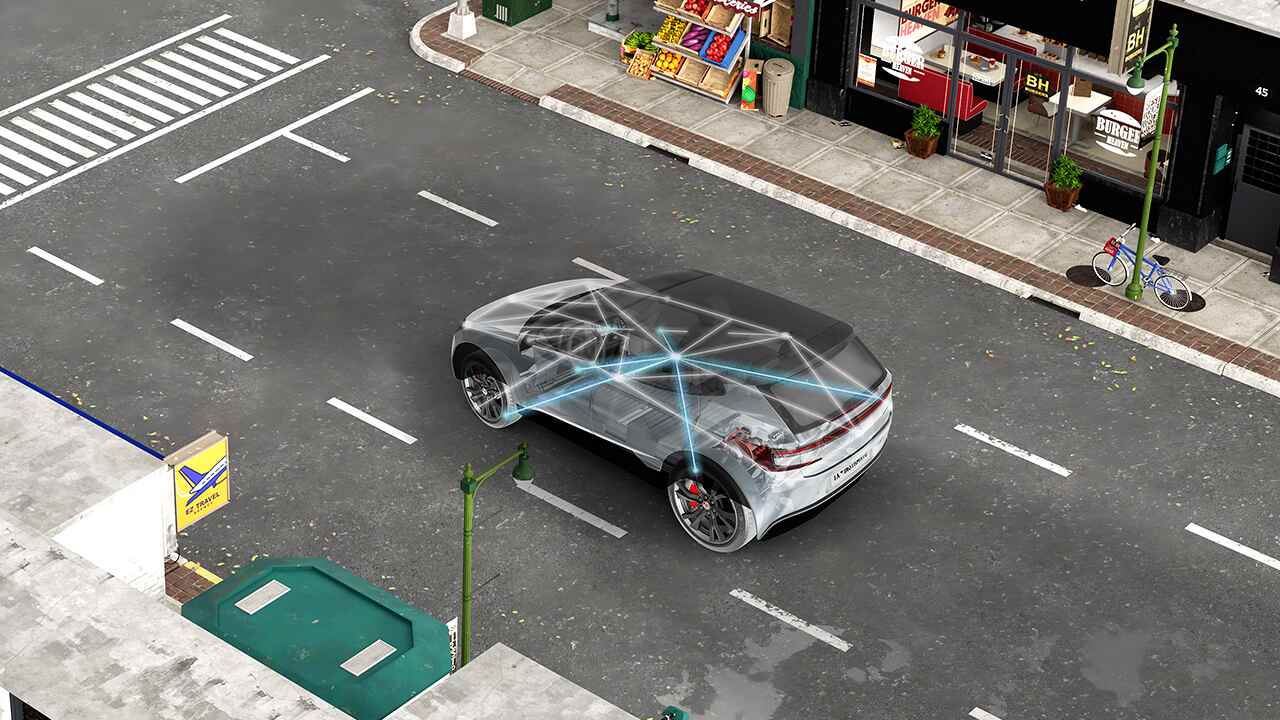Technology that measures temperature, current and voltage can help accelerate the transition from fossil fuels to renewable energy sources

Today’s high-voltage systems — such as electric vehicles (EVs), energy storage systems and distributed solar energy applications — are equipped with many modern sensors. These sensors are able to sense the world around them more accurately, quickly and reliably, playing a crucial role in helping speed up the adoption of renewable energy sources.
The presence of higher voltages in our daily lives is both a consequence and a prerequisite of the electrification trend. Delivering more power in a low-voltage system requires higher current. But increasing current is less efficient than increasing voltage, because more power is lost as wasted heat.
“We go to higher voltages to reduce overall losses in any system requiring higher power,” said Jason Cole, our company’s sensor business unit manager.
Simplifying accurate sensing
Accurate current sensing technology helps unlock the maximum efficiency of high-voltage systems, which is important in EV charging and solar inverter applications. Yet, until recently, the most accurate sensors were either expensive or required extensive calibration, forcing engineers to make trade-offs between increasing the system cost or settling for less accurate readings, which can lead to inefficient system performance.
For example, an EV may have to charge more slowly than its battery pack can handle, keeping drivers waiting. In a home solar system, accuracy compromises could lead to the storage of less energy or the inability to sell energy back to the grid, reducing the cost benefit of the renewable energy investment.
“In the absence of fast and accurate measurement capability, the usual strategy is to dial things down with added margin and not run systems at optimal performance,” said Kumar Parthasarathy, who manages the temperature and humidity sensor products group at our company.
On the flip side, accurate and simple-to-use sensors that can run directly on high-voltage circuits -- such as our company’s TMCS1123 Hall-effect current sensor -- are important to high-voltage systems because they provide accurate readings faster. This enables solar panel or EV designers to accelerate the innovations that help produce, transfer, store and consume energy more efficiently.
Sensors keep high-voltage systems safe
Unwanted heat can reduce the life span and reliability of any component in an electrical system. At high voltages, heat can create hazards for people and property. Understanding where heat is building up can help reveal potentially dangerous situations before they become problems, such as excess heat generated by rust that builds up over a lifetime of normal wear and tear on an EV charger and charging port.
When designers use conventional, low-voltage sensors in high-voltage systems, they are forced to locate those sensors far from the heat source and infer the real temperature rather than measuring it directly. This approach isn’t ideal. By the time radiating heat reaches a sensor positioned centimeters away, the actual temperature at the source may be much higher. Delays of 10 seconds or more are common. In those crucial seconds, overheating could damage components or injure a person.
To provide engineers with more accurate and reliable data, our company is continuously innovating its sensor technology. Our latest temperature sensor, ISOTMP35B, can work directly on high-voltage circuits, allowing designers to place it closer to heat sources and get accurate readings faster.
Better battery management through better sensing
EVs are an essential part of a clean energy future, and new high-voltage sensors can play an important role in boosting the effectiveness of the battery-management systems. Improving charging efficiency in an EV battery pack can mean the difference of dozens of miles on a full charge.
“This is really a modern miles-per-gallon conversation,” Jason said. “The power goes from the charger into the battery and then out to the motor. And that’s a problem if you’re losing power just trying to get it to the motor.”
An EV battery can have hundreds or even thousands of individual cells that can support up to 800 volts, but damage caused by too much or too little charge to even one cell can affect overall battery performance and reliability. Modern devices such as our battery monitors help battery management systems close gaps in peak performance by providing better data about the voltage level of each individual cell in a pack.
“Avoiding over- and undercharging keeps battery cells healthier, and that means more cycles over the life of the battery pack,” said Taylor Vogt, a marketing manager for our company’s Battery Management System Solutions business. “Showing users exactly how much charge is left in a battery translates into better performance, less range anxiety and an overall better consumer experience.”
For electrification to deliver the full benefits of greater efficiency and more responsible resource usage, high-voltage devices must be reliable, safe and operate at peak efficiency while generating, converting, delivering and storing energy. Resolving design compromises and improving real-world performance with better sensing technology are just some of the ways we’re helping high-voltage designers better meet consumer needs and deliver systems that meet expectations for peak performance, efficiency and minimal recharge times in the pursuit of a more sustainable future.

